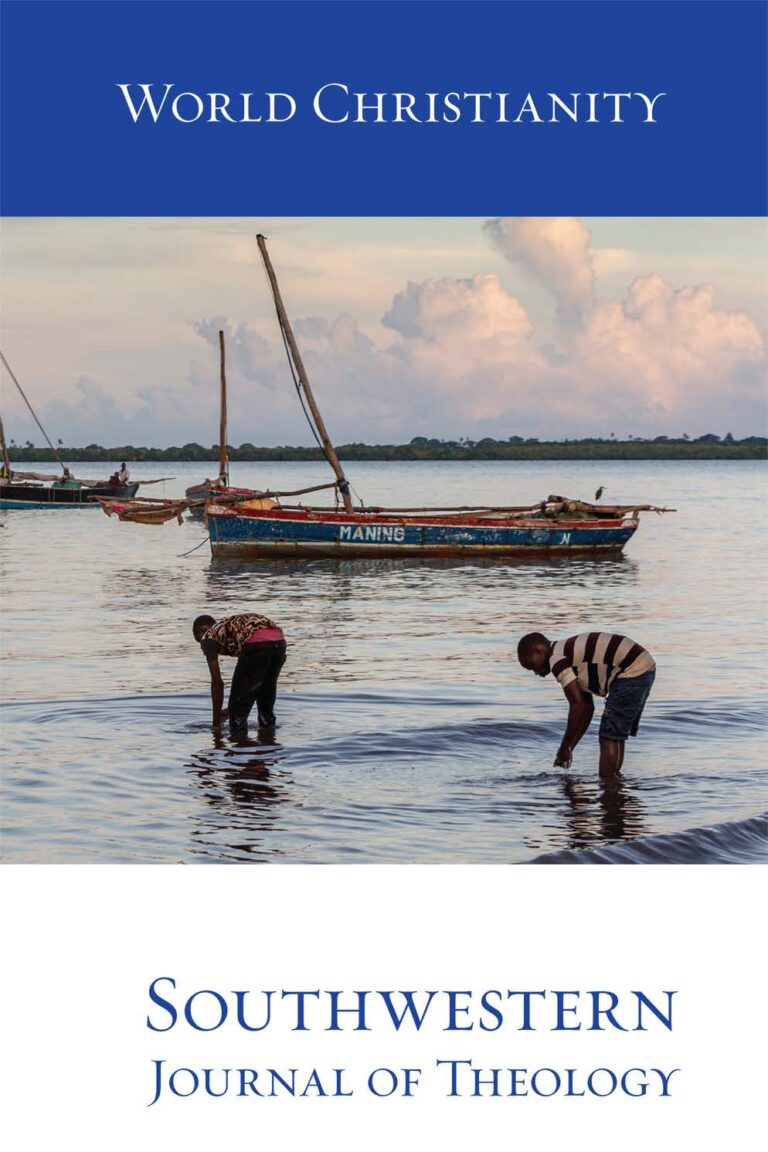
World Christianity
Southwestern Journal of Theology
Volume 61, No. 2 – Spring 2019
Managing Editor: W. Madison Grace II
By Mignon R. Jacobs. Grand Rapids: Eerdmans, 2018 xlv + 377 pages. Hardcover, $48.00
Mignon R. Jacobs is the Dean and Chief Academic Officer at Ashland Theological Seminary. She has chaired the Israelite prophetic literature section of the Society of Biblical Literature and is noted for her work in Old Testament narratives. Her work on Haggai and Malachi represents an update for the NICOT series on these two biblical books. The previous volume was written in 1987 by Pieter A. Verhoef. Together with Mark Boda’s volume on Zechariah (2016), the NICOT has now completed an update of the Haggai, Zechariah, Malachi corpus.
Jacobs structures her commentary with an introductory chapter inserted before the main discussion of the text of both biblical books. The introduction to each book differs slightly. The introduction to Haggai includes discussion of the prophet and date, while the introduction to Malachi does not. The introduction to both books contains comment about the historical and sociopolitical context, conceptual framework, the text and intertextual indicators before ending with an overall analysis of the structure and message of the book. Jacob’s pattern of presentation of the text and commentary follows other volumes in the series. First, she presents her own translation with translational notes. Then, she engages scholarly discussion on the text along with her own notes while using transliterated Hebrew.
The way that Jacobs accomplishes her goal of interpreting the text as prophetic literature while noting the intertextual voices within the text is helpful, as with many of the minor prophets. In her comments on Haggai 1:3b–4, Jacobs points out major intertextual connections with texts from Ezekiel, Isaiah, 1 Kings and Jeremiah. She also presents several minor connections of phrasing with other texts. Even though Jacobs presents the possible connections without judging their significance, her presentation of the connections is still helpful for those trying to make interpretive decisions although she does not make such decisions herself.
Jacobs has masterfully controlled the secondary literature on Haggai and Malachi. Her bibliography contains all the major players as one would expect, and her footnotes show detailed familiarity with their arguments regarding texts like Haggai 1:11 where some scholars see parallels with texts from Deuteronomy. Additionally, her notes on the text are detailed. When Jacobs translates Haggai 2:15–19, she then presents eleven notes concerning translational decisions plus footnotes (104–06).
Another strength of this book is the way in which Jacobs presents charts and maps. For example, the chart of Persian and Yehudite Leaders helps to understand the historical figures mentioned in and around 500 BC. Furthermore, the map of Yehud among the Persian Provinces (135) is an excellent visual aid for reading and understanding not only the references in Malachi, but those in Haggai as well. Those who are using this work as a textbook will find that Jacobs has presented charts and maps that will be useful for students to memorize.
The work does have a few shortcomings. One may expect a biblical commentator to claim something about the identity of the biblical book’s author; however, Jacobs makes no such claims. She does argue that a real prophet named Haggai lived during the time the book describes (approximately 520 BC) as the book claims. Yet, she never makes any statements about authorship. In dealing with the book of Malachi, Jacobs quickly notes that scholars disagree whether Malachi refers to a person or functions as a title before she moves to the next issue. At the same time, it is true that the historical location of each book for which she argues could be used to bolster an argument for traditional authorship of both books (she dates Haggai to 520 BC, and Malachi to approximately 515–458 BC); however, she makes no such claim in this work.
Additionally, Jacobs states in the introduction that one of her goals is to “inquire about the significance of the text for both the ancient and the modern audience” (viii). She does an admirable job of demonstrating the significance of the text for the ancient audience. However, she often fails to suggest ways that the text is significant for its modern audience. For example, in discussing Malachi 2:16 (often translated “God hates divorce”) she makes no reference to the contemporary issue of divorce.
Similarly, discussions of theological and thematic elements are not given priority in this book. To be clear, she does list intertextual links between Malachi and the New Testament, but these discussions conclude at the textual level without moving to the theological level. Moreover, her discussion of four prevalent themes in Malachi takes up less than one full page (152–53).
To sum up, this work represents a significant step in terms of scholarly commentaries on the books of Haggai and Malachi. Anyone teaching a course on Haggai, Zechariah, and Malachi will want to make use of Jacob’s work, since the work of Meyers and Meyers is becoming dated. For the seminary student, and the local pastor with interpretation (not application) questions, this book will provide an excellent starting point for digging into the text of these two minor prophets. I highly recommend this book.





